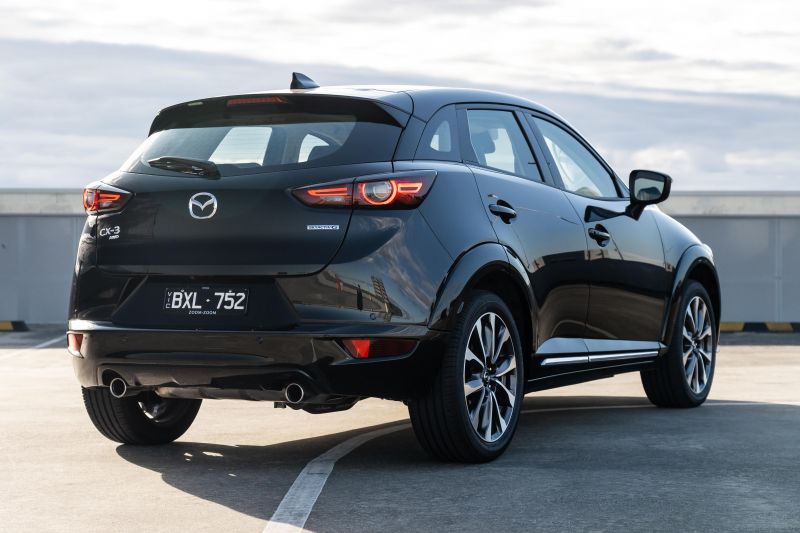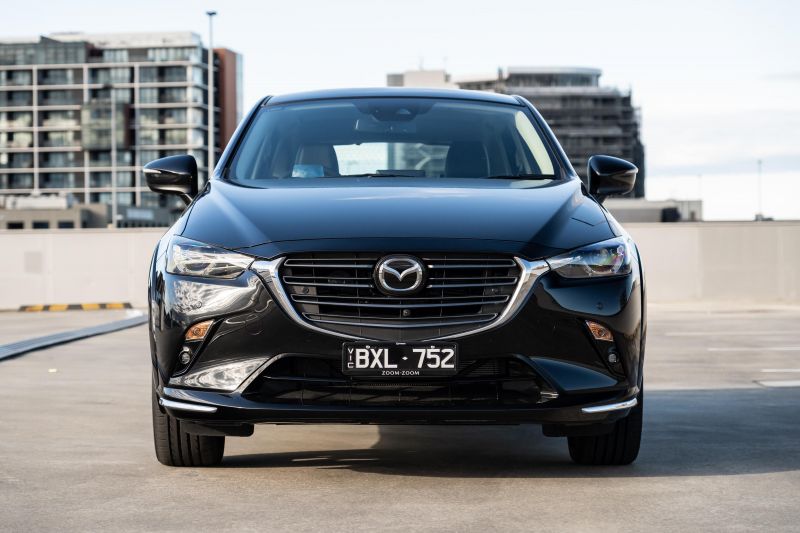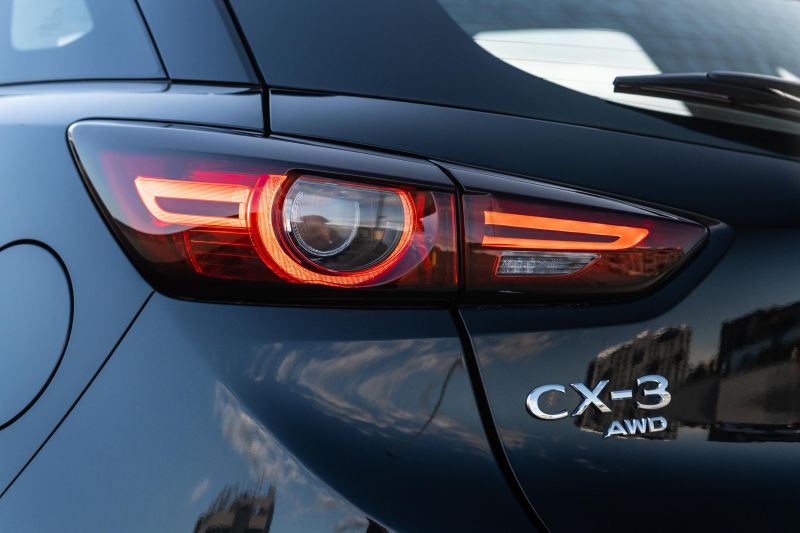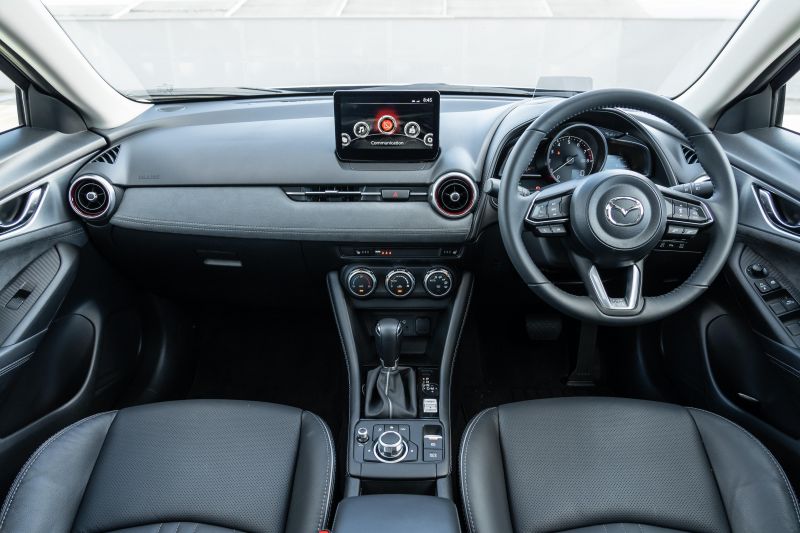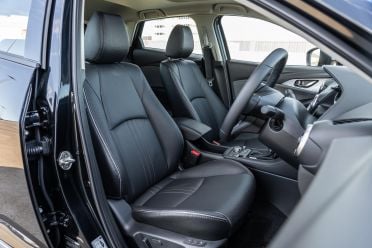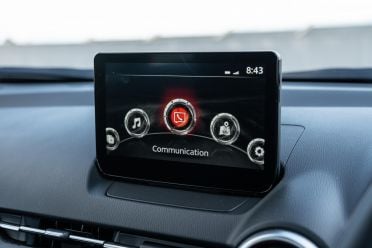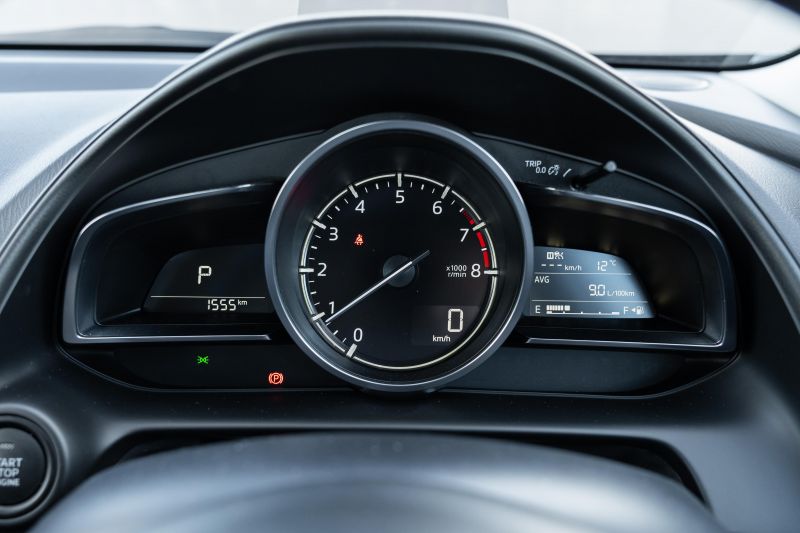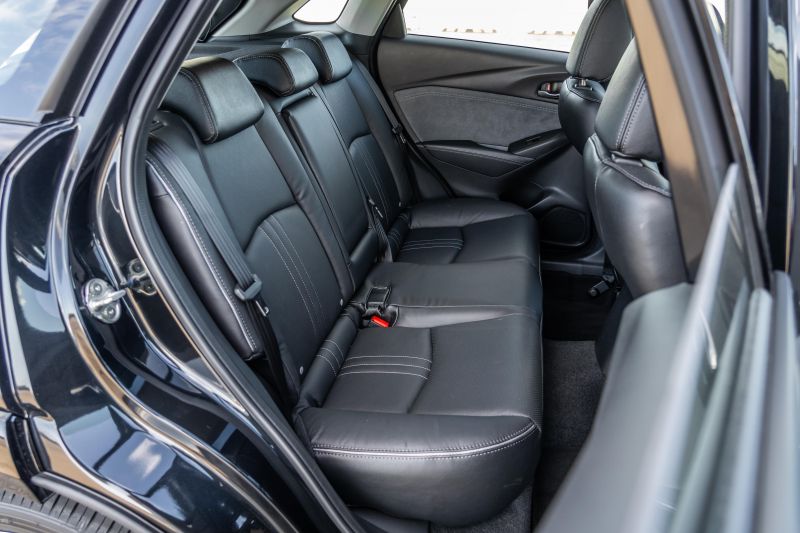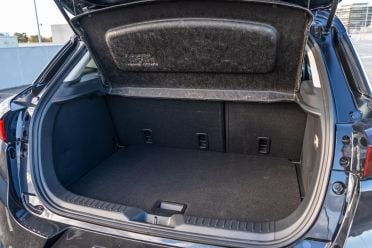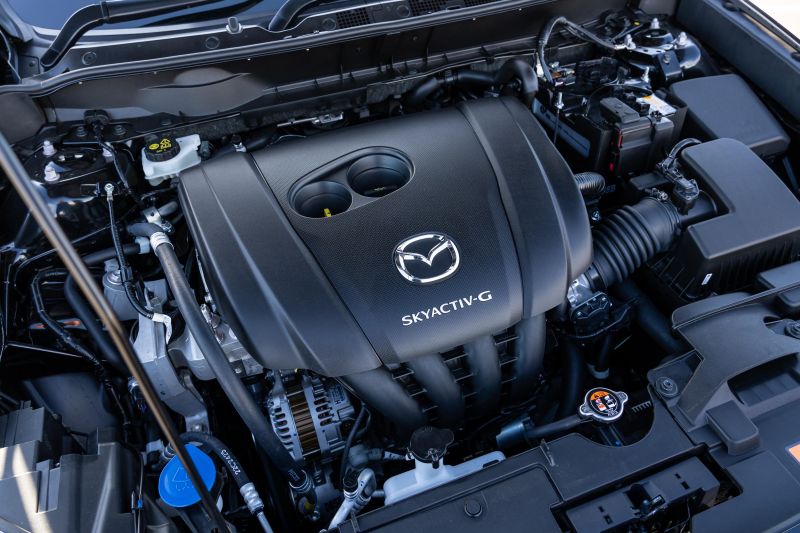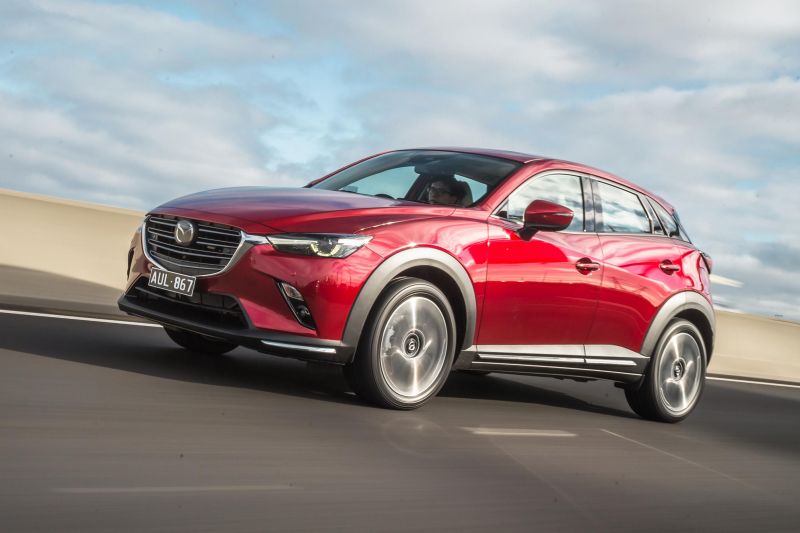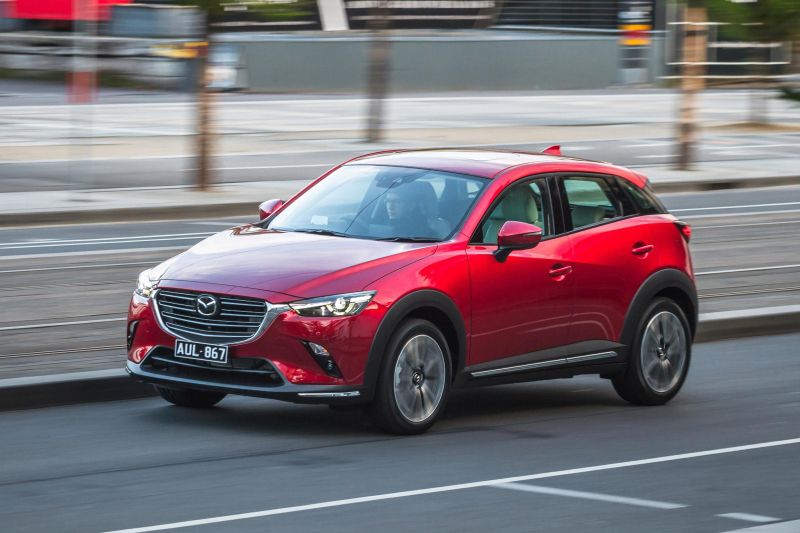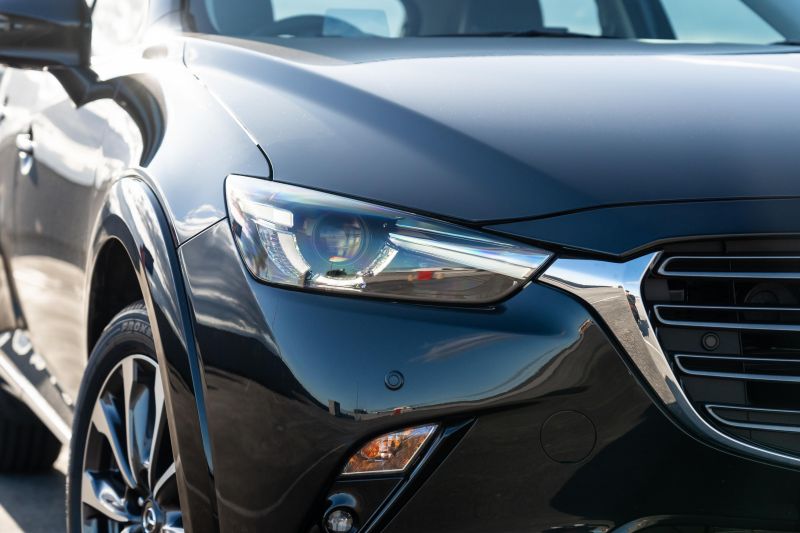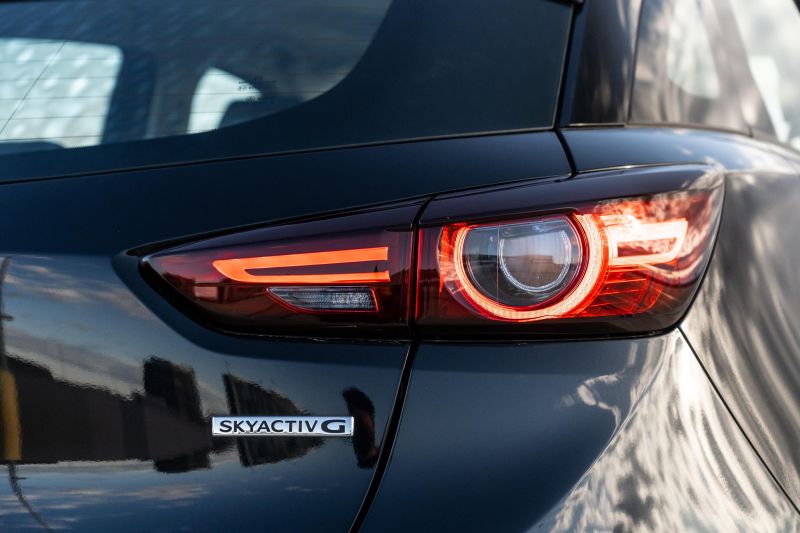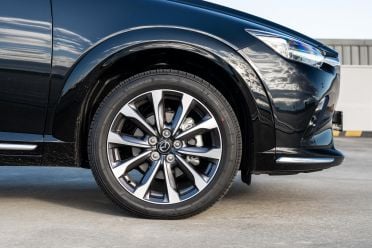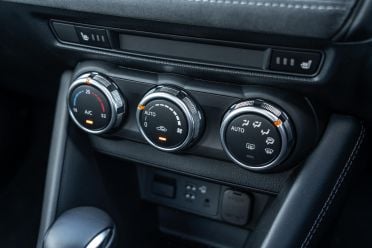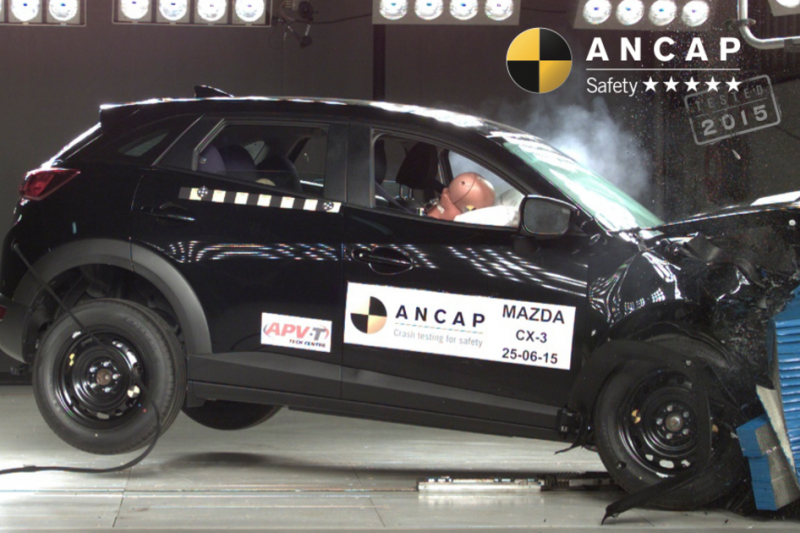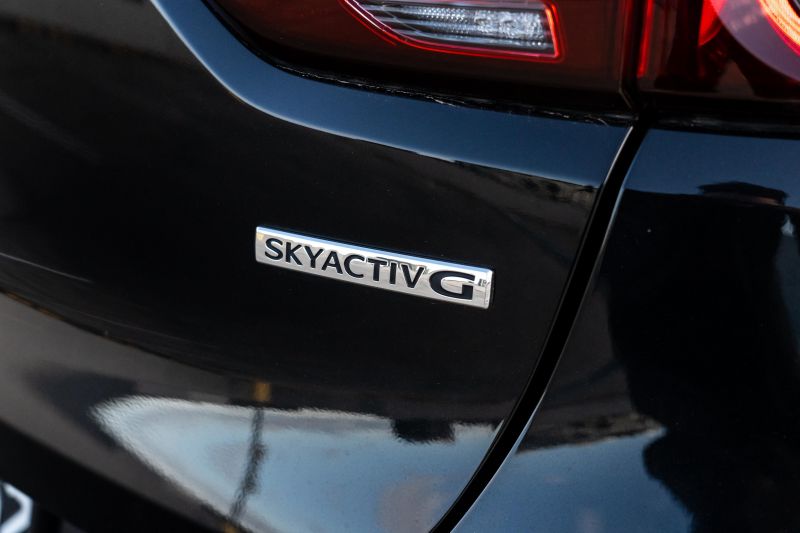The Mazda CX-3 is faced with a range of fresh competitors, but it’s still the light SUV king.
To date in 2022 it’s the best-seller ahead of the Kia Stonic and Toyota Yaris Cross, and it remains one of Mazda’s best sellers in Australia.
Under the skin, the CX-3 shares its bones with the Mazda 2 compact car. That means it’s a city-friendly size, and is relatively economical to run.
Above the surface, it features a chunkier SUV body and funky styling to help it stand out from the crowd.
The CX-3 debuted in 2016 globally, and the Mazda 2 it’s based on dates back to 2014. Its competitors are younger, and some now feature turbo or hybrid power, where the little Mazda is only offered with a naturally-aspirated engine.
Is the car’s status as a star on the sales charts justified, or is the CX-3 past its prime?

How much does the Mazda CX-3 Akari AWD cost?
The Akari AWD is the second-most expensive CX-3 in the range, sitting below on the Akari LE AWD.
With a sticker price of $39,190 before on-road costs, it’s priced loosely in line with the Toyota Yaris Cross Urban AWD Hybrid ($37,990).
It’s more expensive than some of its rivals (think Hyundai Venue, Kia Stonic), and is priced within touching distance of the larger Kia Seltos GT-Line ($41,700) and Hyundai Kona Highlander ($38,000).
There’s also some overlap between the CX-3 and its newer, bigger brother, the Mazda CX-30.
2022 Mazda CX-3 pricing:
- Mazda CX-3 Neo Sport manual: $23,390
- Mazda CX-3 Neo Sport auto: $25,390
- Mazda CX-3 Maxx Sport manual: $25,390
- Mazda CX-3 Maxx Sport auto: $27,390
- Mazda CX-3 Maxx Sport LE auto: $28,140
- Mazda CX-3 Maxx Sport AWD auto: $29,390
- Mazda CX-3 sTouring manual: $30,090
- Mazda CX-3 sTouring auto: $32,090
- Mazda CX-3 sTouring AWD auto: $34,090
- Mazda CX-3 Akari auto: $37,190
- Mazda CX-3 Akari AWD auto: $39,190
- Mazda CX-3 Akari LE auto: $37,690
- Mazda CX-3 Akari LE AWD auto: $39,690
All prices exclude on-road costs
What is the Mazda CX-3 Akari AWD like on the inside?
The CX-3 is rooted in a different era of Mazda design to the latest CX-30, CX-5, or even the BT-50 ute.
Its dashboard is shared with the 2 hatchback, and takes inspiration from the MX-5 sports car. It’s an asymmetrical, funky design that, in our Akari tester, is finished with what feel like quality materials.
The driver and passenger sit in leather-trimmed pews that offer a reasonably commanding view of the road ahead, complete with electric adjustment and memory for the driver.
The steering wheel feels like a quality item, and the driving position is one of the more accomodating in the small SUV class.
Even at six-seven it’s possible for me to get comfortable behind the wheel, although the CX-30 has more space again.
Technology is a core part of the appeal of small SUVs, and it’s a real weak spot in the CX-3. Where most of the Mazda range has moved to a new infotainment system, the MZD Connect setup featured here is slow to load, features blocky graphics, and isn’t a touchscreen.
Apple CarPlay takes what feels like a minute to launch, even though it’s wired, and the cameras are incredibly low-res. The reversing camera is easily dazzled, making it hard to use at night, and the surround-view is absolutely tiny.
For a car aimed at younger buyers living in the city, the poor cameras are disappointing. Yes, the CX-3 is small and easy to park, but it still should have the latest technology given its $40k starting price.
The simple instrument binnacle in front of the driver is easy to use at a glance, and features a prominent digital speedo.
It’s a variation of what you get in the MX-5, and feels a bit sporty with its prominent central rev counter.
It’s a shame the head-up display pops up on a sliver of glass rather than projecting onto the windscreen – and that the only way for tall drivers to actually read it is to have the display set so low it’s essentially being projected onto the intersection of the dashboard and windscreen.
Storage space is decent up front. There’s a single cupholder on the transmission tunnel and bottle holders in the doors, along with a decent underarm storage bin, and an open space at the base of the dash.
Rear seat space isn’t a strong suit in any small SUV, but it’s particularly poor in the CX-3.
Legroom is very limited, the backrest is upright, and there’s very limited headroom for adults or taller children. If you need to use the rear seats often, the CX-30 (or something like a Seltos) is a better bet.
There are no vents back there, nor are there USB ports. Mazda does deserve credit for finishing the doors in the same high-end materials as the fronts, however.
As for the boot? Once again, the car’s city hatchback roots shine through.
It’s a flat space, but you only get 264 litres of capacity which means you’re limited to smaller bags or groceries. Newer rivals such as the Volkswagen T-Cross pack significantly more boot space into similarly-sized bodies.
Its handy flat-loading 1174L of space is handy if treated as a two-seater with the rear 60:40-split seatbacks stowed.
What’s under the bonnet?
The Mazda CX-3 is powered by a 2.0-litre naturally-aspirated four-cylinder petrol engine, making 110kW and 192Nm.
It’s available with front- or all-wheel drive, and with a choice of six-speed manual and automatic transmissions. Our tester was an automatic all-wheel drive.
Claimed fuel economy is 6.7 litres per 100km, we saw around the 8.0L mark over a mix of highway and city driving.
The CX-3 AWD has a 44L fuel tank (front-wheel drive cars get 48L), and drinks 91 RON regular unleaded.
How does the Mazda CX-3 Akari AWD drive?
The CX-3 feels light on its feet relative to some of its newer rivals, although its naturally-aspirated 2.0-litre engine is far from inspiring.
Although it’s responsive enough off the mark, the engine doesn’t pack much of a punch in the mid-range, and gets thrashy as you push towards redline.
The 2.0-litre atmo four lacks the more effortless shove of turbocharged engine, and the CX-3 is less refined than newer Mazda models, so it really feels like it’s working hard.
It takes a moment to settle down on cold starts, instead defaulting to a frenetic and slightly unrefined idle, and the start/stop system can jolt the car at times. It’s a serviceable powertrain, but at $40k it really needs to be more than that.
On the positive side, the torque converter automatic is smooth and unobtrusive.
There’s no lurching off the mark, and there’s no learning curve for people getting out of older cars like there might be with a dual-clutch. Bonus points go to Mazda for having the correct shift pattern on its manual mode – push for down, pull for up.
We’ve praised the CX-3 for its keen handling in the past, and it’s still a highlight in the Akari AWD. Although it’s a bit heavier than the front-wheel drive base model the range-topper responds smartly when you tip it into a corner, and feels more balanced than a small SUV really needs to when you’re there.
The ride in this particular CX-3 is harsher than in base models with their smaller wheels and chubbier tyres, however.
For the most part it’s smooth, but we’ve already noted the suspension in base models is quite clunky over speed bumps or potholes. With bigger, heavier wheels and less sidewall to play with, that feeling is accentuated in the Akari AWD.
It undermines the car’s pitch as a luxurious small SUV, and makes it feel old alongside more refined German and Korean alternatives. At highway speeds though, the CX-3 feels planted for a tall, small car.
It buzzes along happily enough at a cruise, but ask for more than that (like overtaking) and the 2.0-litre engine starts working hard and making noise – especially if you have a few passengers on board.
Noise from the mirrors and tyres is reasonably well suppressed, but you still get the sense this is a city car at heart.
The adaptive cruise control is smooth and smart, although you don’t get active lane-centring assist even in the range-topper.
What do you get?
CX-3 Neo Sport highlights:
- 8.0-inch touchscreen infotainment system
- Wired Apple CarPlay and Android Auto
- DAB+ radio
- Six-speaker sound system
- 16-inch steel wheels with wheel covers
- Halogen headlights
- Power folding mirrors
- Air-conditioning
- Height-adjustable front seats
- Black cloth upholstery
- 60/40 rear split folding seats
- Electric park brake with hold function
- Keyless entry and start
- Rear seat belt warning
CX-3 Maxx Sport adds:
- 16-inch alloy wheels
- Automatic headlights
- Rain-sensing wipers
- Rear centre armrest
- Leather-wrapped shifter and steering wheel
- Overhead sunglasses storage
- Climate control
- Satellite navigation
- Auto-dimming rear-view mirror
- Blind-spot monitoring
- Rear-cross traffic alert
CX-3 Maxx Sport LE gains:
- Tan suede and white ‘Maztex’ leatherette upholstery
- Unique 16-inch alloy wheels
- Gloss black mirrors and front grille
CX-3 sTouring adds:
- 18-inch alloy wheels
- Heated body-coloured mirrors
- LED daytime running lights
- LED front fog lights
- LED headlights with auto high-beam
- LED tail lights
- Black ‘Maztex’ and black cloth upholstery
- Head-up display
- Driver attention alert
- Front parking sensors
- Traffic sign recognition
- Lane departure warning
- Gloss black painted body cladding
CX-3 Akari adds:
- Adaptive LED headlights
- Power sunroof
- Heated front seats
- 10-way power driver’s seat with memory
- Black or white leather upholstery
- Adaptive cruise control with stop/go
- Surround-view cameras
Is the Mazda CX-3 Akari AWD safe?
The Mazda CX-3 wears a 2015-stamped five-star ANCAP safety rating, based on older test criteria.
It managed 36.44 out of 37.00 points, including perfect scores in the Side Impact and Pole tests, and 15.44 out of 16.00 in the Frontal Offset assessment.
Standard safety equipment includes:
- 6 airbags (front, front-side and curtain)
- AEB with Pedestrian detection
- Rear parking sensors
- Reversing camera
CX-3 Maxx Sport adds:
- Blind-spot monitoring
- Rear cross-traffic alert
For safety features like lane departure warning, driver attention monitoring and traffic sign recognition, you’ll need to step up to the mid-range sTouring at a minimum, while the Akari models get adaptive cruise control with stop/go, adaptive headlights and a surround-view camera.
How much does the Mazda CX-3 Akari AWD cost to run?
The Mazda CX-3 is covered by a five-year, unlimited-kilometre warranty with roadside assistance for the same period.
Scheduled maintenance is required every 12 months or 10,000km (whichever comes first), with the first five services capped at $331, $391, $331, $391 and $331.
Additional items include the cabin air filter ($100) which needs to be replaced every 40,000 kilometres, while brake fluid replacement will add $71 every 24 months or 40,000km.
CarExpert’s Take on the Mazda CX-3 Akari AWD
Mazda has done a good job keeping the CX-3 fresh, but no amount of leather can hide the fact it’s a car in need of an update.
It drives well, and it’s comfortable if you’re sitting in the front seat, but the tiny boot and compromised rear seats aren’t really good enough at the $40k mark. Interior technology is also a let down.
The CX-3 still holds some appeal, but we’d be steering clear of all-wheel drive (as if you’re ever taking it off road), and would look at the more affordable sTouring grade instead of the Akari.
If it’s a plush, small Mazda SUV you want, the CX-30 Astina has a sticker price around $40,000 and offers more space, significantly better technology, and just as much luxury.
Click the images for the full gallery
MORE: Everything Mazda CX-3





